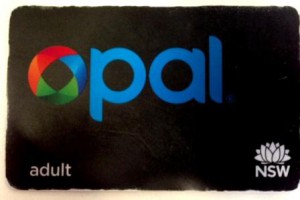Next time you tap onto a train bus or tram using an Opal, Myki or GoCard e-ticket ask yourself this question: why do even we need public transport tickets at all?
That’s the kind of radical thinking that will soon be confronting transit authorities across Australia as global cities get much smarter about accelerating mass transit by following the global lead set by Transport for London.
The British capital’s Oyster card might be the gold standard in global transport ticketing, but these days more and more savvy Londoners don’t even bother with it.
Instead commuters just tap-and-go at the ticket gate with their everyday contactless payment cards – or better still a contactless enabled phone.
ApplePay? That works too.
It’s a big switch from proprietary plastic, one that global financial services players like MasterCard are betting will take root quickly as transport payments irrevocably move from cash and separate tickets to simple, straight through transactions.
And the payments revolution is already hitting home, with Australians using everyday ‘tap-and-go’ payment cards to board trains and buses in London ranking second among non UK users between September 2014 and May 2015.
Significantly, when it comes to avoiding buying an Oyster card in favour of plastic you already have in your wallet, foreign users make up 12 per cent of the tap volume – data TfL knows because they can tell the country where the cards are issued.
It’s a trend not lost on Grant Johnston, MasterCard’s head of Commercial Payments in Australia.
With around 70 per cent of transactions below $100 made on a MasterCard in Australia now tapped via contactless, it was simply a no brainer for Aussies in London to bypass Oyster top-up queues at stations.
“At one stage in London when they were doing the tests a third of the users were Aussies. Because we had contactless [at home], we were used to it,” Johnston says.
Craig Driver, MasterCard’s Global Head of Government Procurement, Transit and Receipts, say enabling visitors and tourists to cities to just hit the transit system without pre-purchasing a separate ticket is part of what defines a “smart city”.
“Let’s say you are coming in from a non-English speaking country, there’s a sense of calm knowing that you can be able to [instantly] ride mass transportation,” Driver says.
It’s also a world away from the usual scenario of entering a country, going to a kiosk, trying to calculate local currency costs and conversion – and then fretting that you’ve loaded on too much or too little onto a pre-paid ticket.
“You’re not really sure ‘do I have enough?’”, Driver says, acknowledging that passengers often forfeit left-over funds on ticket, money that’s known as ‘breakage’.
But that small windfall goes nowhere near the kind of extra spending and economic activity that visitors with instant access to mass transit can bring to a city. For starters tourists and visitors can travel further afield to destinations outside the CBD and off the tourist trail.
“There’s a boon in that sense,” Driver says. “You are a smart city, you’re that much more attractive to visitors.”
A big selling point of London’s system to local and visiting commuters is that they pay the same to use a contactless payment card as they would an Oyster card, so there’s no real cost difference.
But just how close Australian cities arte to making the jump to ticketless transit is hard to tell, though Sydney would have to be the closest because its Opal card is largely built on Transport for London’s model.
It’s also no-coincidence that what used to be CityRail, the State Transit Authority (buses) and Sydney’s ferry service have now all been brought under ‘Transport for NSW’.
A major saving for government transit operators is that can heavily downsize on the cost associated with issuing and managing a card fleet that in effect distributes a defacto currency.
While there’s still no official word on what stage Transport for NSW is at with going ticketless, there is a broader acknowledgement across the NSW government that it must innovate in terms of what works best for its customers rather than shielding legacy systems from change.
At a global level, MasterCard’s transit payments gurus acknowledge there’s still some heavy lifting to be done in terms of retiring and replacing ticketing systems that are often several decades old.
Driver says there are now trials in New York and that MasterCard is working with transit authorities in Chicago to put in so-called interoperable open-loop functionality.
“You have legacy systems, so these contracts need to come up, you have to swap out all this technology,” Driver says.
“The contactless element that MasterCard brings is the easy part – it’s the legacy systems that’s the problem in a lot of cities.”
With a fresh Opal card system conversion bedded down in Sydney, it looks like the odds are shrinking that Sydney will again follow London’s lead on overhauling mass transit.






I certainly wouldn’t want to replace my Opal card with my mobile telephone, which keeps running out of power!